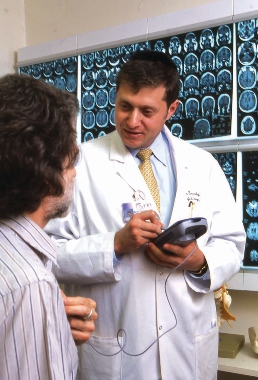NY Methodist’s Parkinson’s Disease Program: a Team Approach

Parkinson’s disease (PD) is one of the most common neurological disorders — each year, over 50,000 Americans are diagnosed with the condition. PD is a chronic disease; once symptoms appear, they can be treated but will not disappear entirely. Over 90 percent of PD cases occur in those aged 50 and over, making the disease a major threat to the quality “golden years” a senior deserves.
PD is a disorder of the central nervous system involving the degeneration and loss of nerve cells in a key area of the brain. The most characteristic feature of Parkinson’s is a slow and rhythmic tremor when the body is at rest. There are many other common symptoms of PD, but there is no way of knowing which ones a patient will have, or in what order they may occur. Parkinson’s usually progresses slowly, but the rate of progression varies from one individual to another.
New York Methodist Hospital’s (NYM’s) Parkinson’s Disease Program offers the only comprehensive diagnostic and treatment program in Brooklyn for Parkinson’s and other movement disorders. The Program utilizes a team approach, engaging the skills of neurologists, neurosurgeons, speech pathologists, mental health professionals, nurses and rehabilitation therapists.